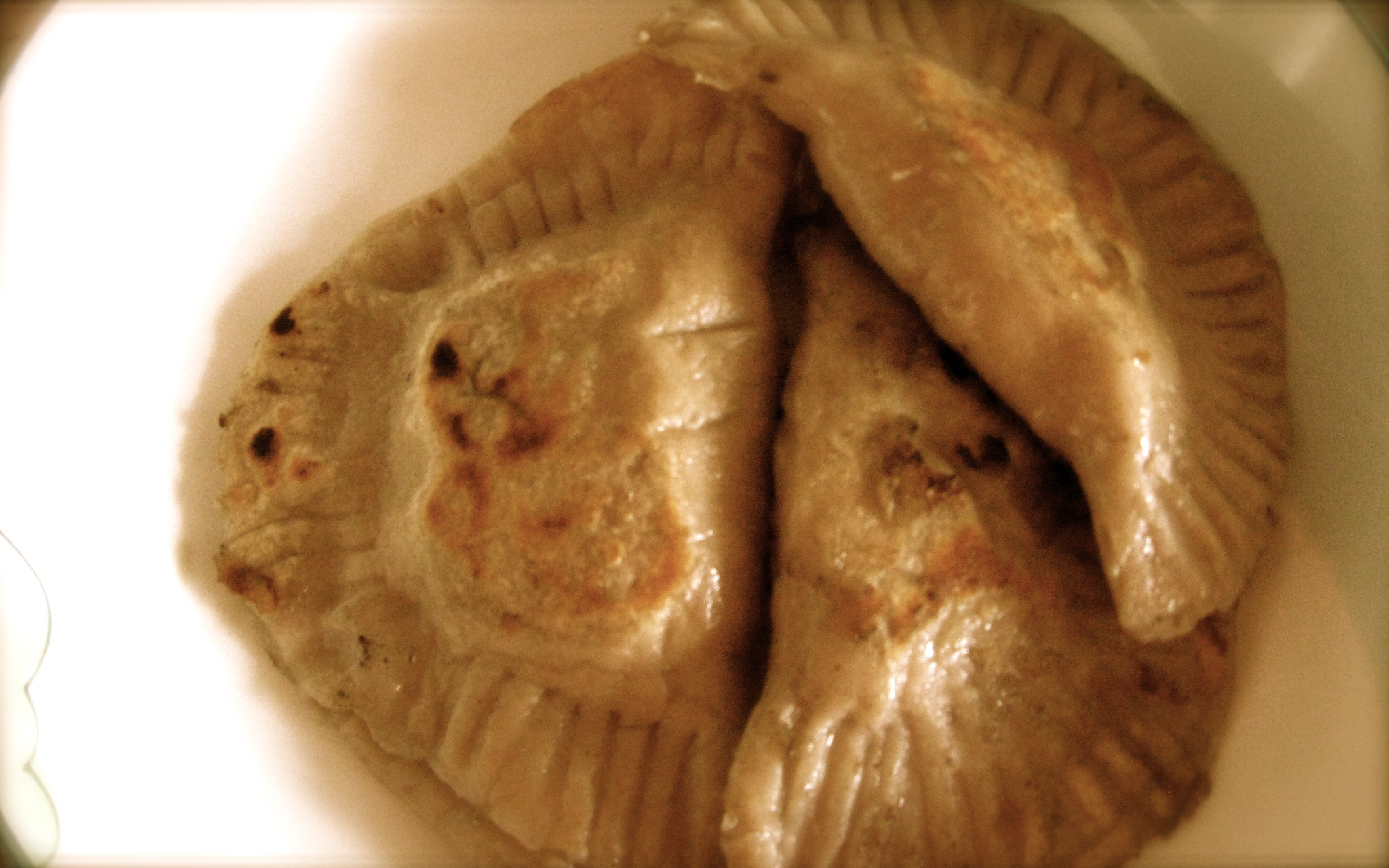
Potato Pierogies for the People!
One of the unexpected things I’ve learned over the years of living in inconvenient places and having to improvise ways of making the comfort foods of my homeland is that the home made version is so much better than the store-bought version whose absence I had grown to fetishize.
Things like a simple chicken noodle soup- I have a feeling I’ll never be able to go back to Campbell’s or Lipton now that I’ve been making my own for several years now. Hell, I even make my own noodles.
And pierogies, my old lazy adolescent stand-by? A half dozen frozen pierogies hauled out of the freezer, boiled for a few minutes and served with plain yogurt- a broke university student’s dinner of champions.
And now I’ve gone and destroyed that easy option. Why? Because home made pierogies are a hundred million bazillion times better than those frozen things. I just can’t go back. It’s a little bit heart breaking.
At the moment, I’m in the middle of a quest to see how many things I can make out of my Xinjiang Lady-Noodle dough and we can safely add pierogies to this list. Technically pierogy dough is gentler, softer, less chewy. It often has butter or oil or sour cream incorporated into it. Below is the official recipe taken from Momofukufor2.com and I think Steph (the bloggist) got it from Gourmet magazine.
For the Xinjiang dough, as you may recall, I used 3 cups of flour (I used rye), 1 cup of water and 2 teaspoons of salt. You just mix it all together in a biggish bowl (I use my rice cooker insert) until it is lumpen, then tip it out onto a clean counter top and knead it for about ten minutes. See here or here or here for details on how to deal with dough.
For dough
- 3 cups all-purpose flour plus additional for kneading
- 1 cup water
- 1 large egg
- 2 teaspoons vegetable oil
- 1 teaspoon salt
For potato filling
- 1 1/2 pound russet potatoes
- 6 ounces coarsely grated Cheddar or 4 tablespoons green onion oil*
- 1/4 teaspoon salt
- 1/4 teaspoon black pepper
Special equipment: a 2 1/2-inch round cookie cutter
Now, you’ll note that her recipe gives you the option of using cheese or something called green onion oil. Green onion oil is from David Chang’s Momofuku cookbook, which she was attempting to cook her way through in her blog.
My knowledge of David Chang comes from two sources: Anthony Bourdain and GQ. Based on those two sources, I decided I quite liked the fellow and went for the green onion oil. It also seemed like a much more logical ingredient than a big old pile of cheddar in a recipe purportedly tailored toward a Chinese kitchen.
For the green onion oil, I only had a bundle of chives, just under a cup when cut up. I used 3 cloves of garlic and a rather large knob of fresh ginger. I used about 4 tablespoons of our sunflower oil instead of two of canola, because I knew my potatoes would need lots of lubrication. I did the sesame oil and salt and pepper as listed.
To make the oil, you heat up the canola (or sunflower) oil in a wok or small saucepan until it goes all shimmery. You throw all the oniony bits, the garlic and ginger into the oil, give it a stir, then remove it from the heat. Add the sesame oil, salt and pepper, and stir. Let it sit for a while for the flavours to meld.
For Green Onion Oil
- 1/2 bunch of green onions, thinly sliced (about 3/4 to 1 cup)
- 1 clove of garlic, minced
- 1 small shallot, minced
- 1 small knob of ginger, minced
- 2 tablespoons canola oil
- 2 teaspoons sesame oil
- salt and pepper to taste
- sriracha (optional)
Let me show you how I made the pierogies that totally ruined my ability to go back to supermarket frozen ones. Sorry, Cheemo!
We’ll start with the oil.
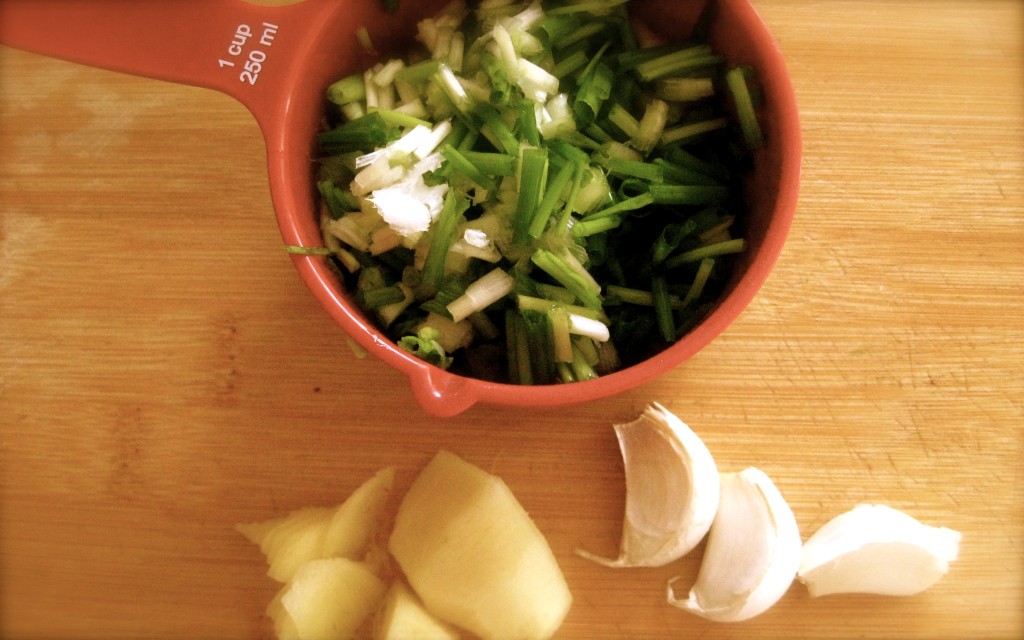
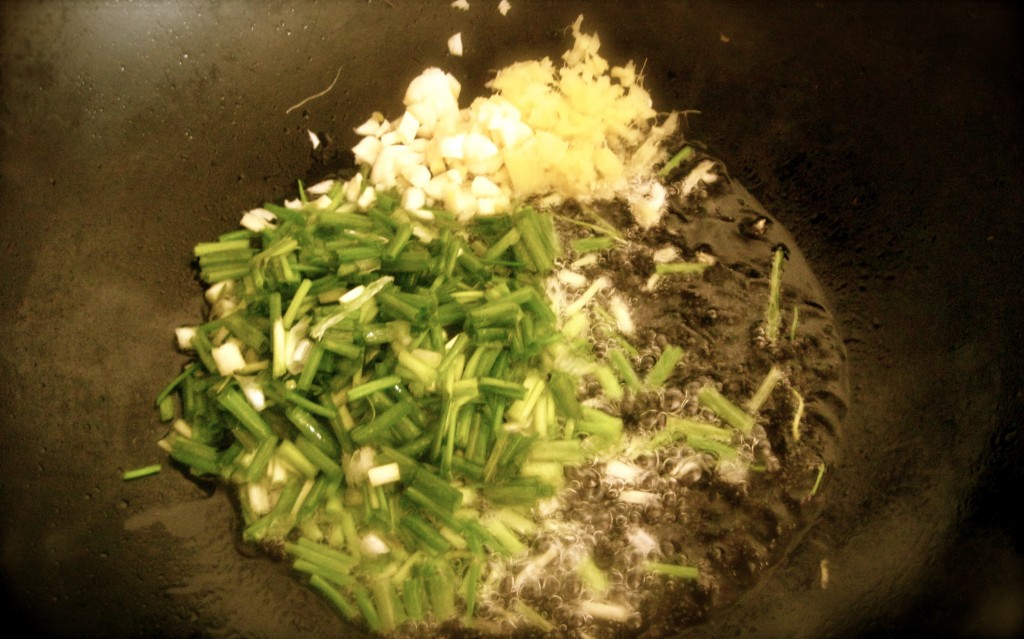
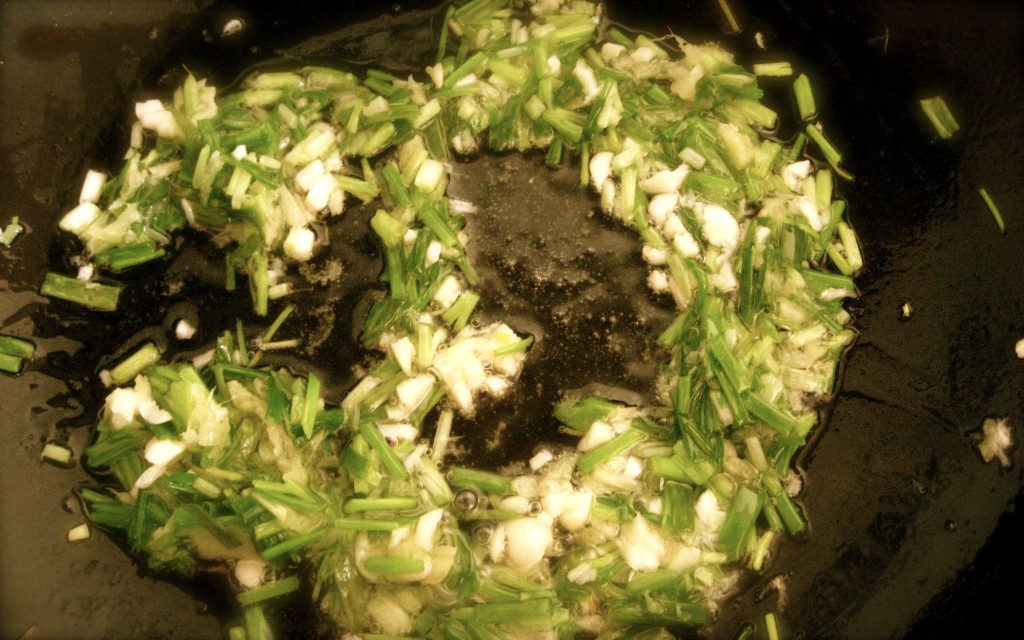
With the oil off the heat and set aside to meld with its own flavours, go find yourself a hefty spud of at least a pound. Mine was Mega-Spud. See–
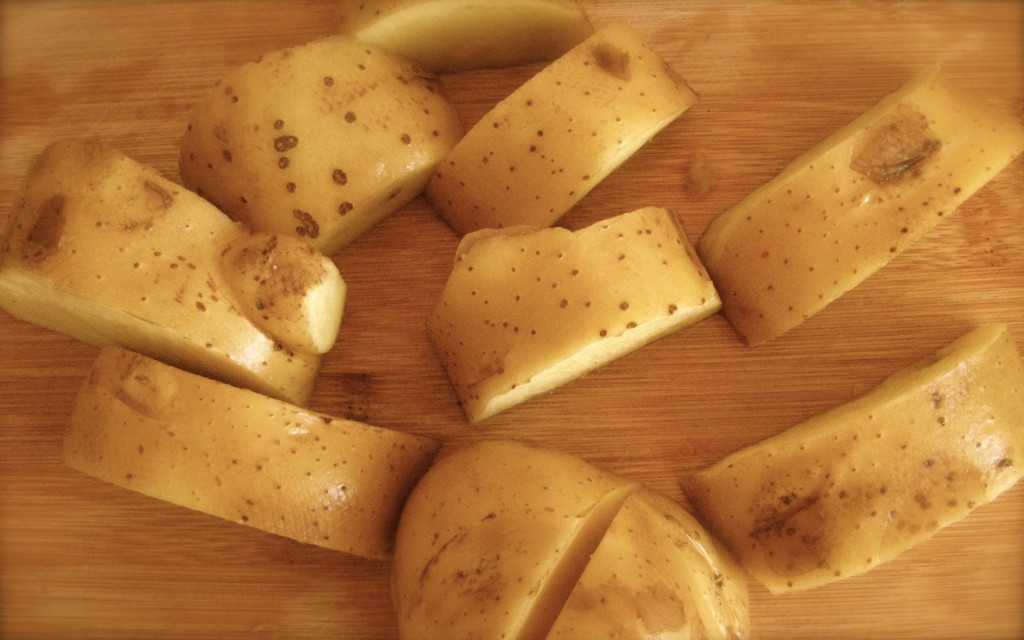
Boil that spud until tender enough to mash up with a fork or whatever instrument you may have at hand.
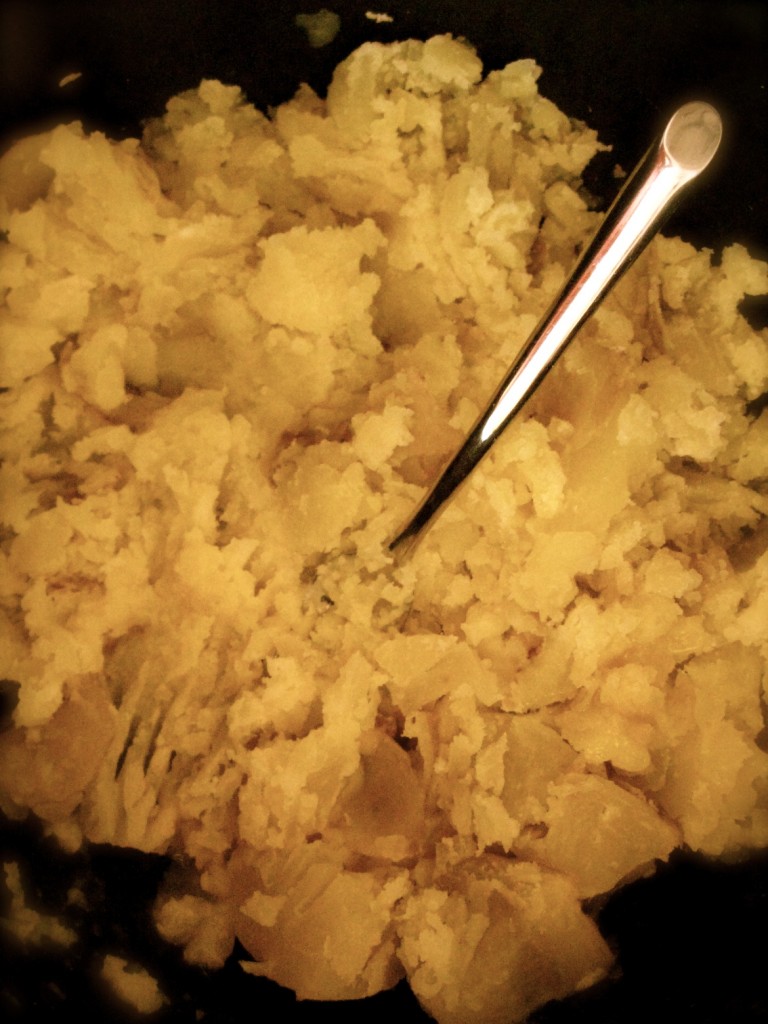
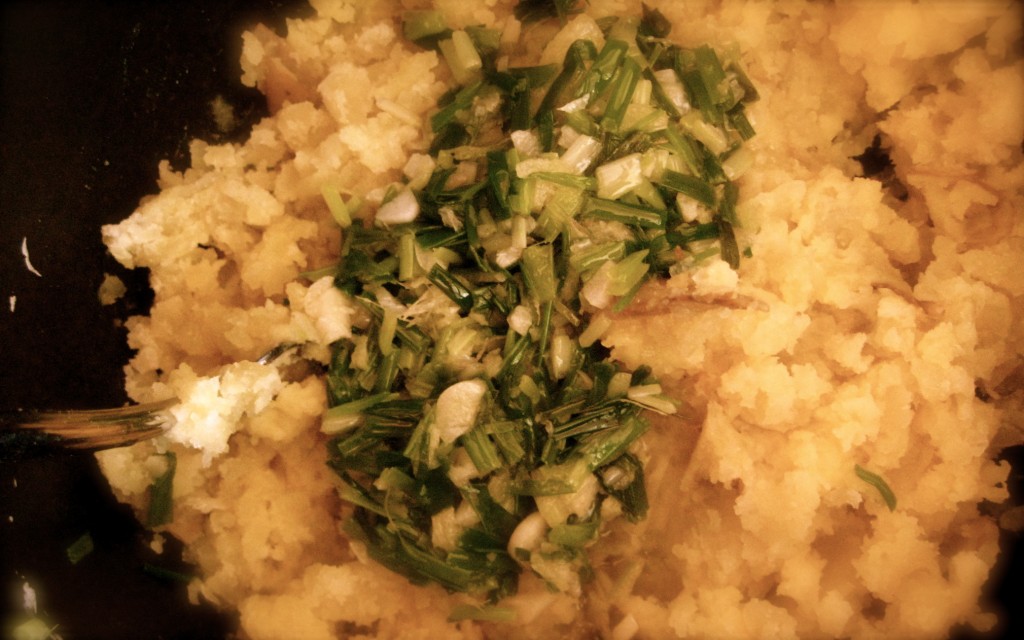
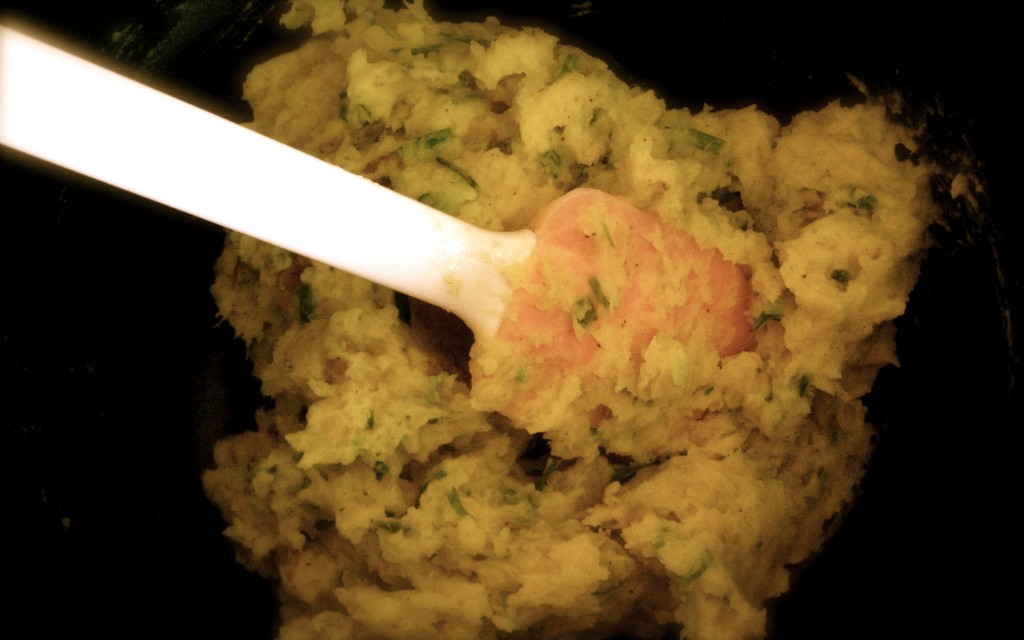
Then, while the spud mixture is cooling, get your dough sorted out. I recommend doing the dough the day before and just wrapping it in a lightly dampened cloth and keeping it in a plastic bag in the fridge til you need it. Remember, you can also use it for tortillas, chapatis, noodles and experimental pottery.
Cut off a slice of the dough ball, dip it in flour so it isn’t sticky, and roll it out until it’s noodle-thin.
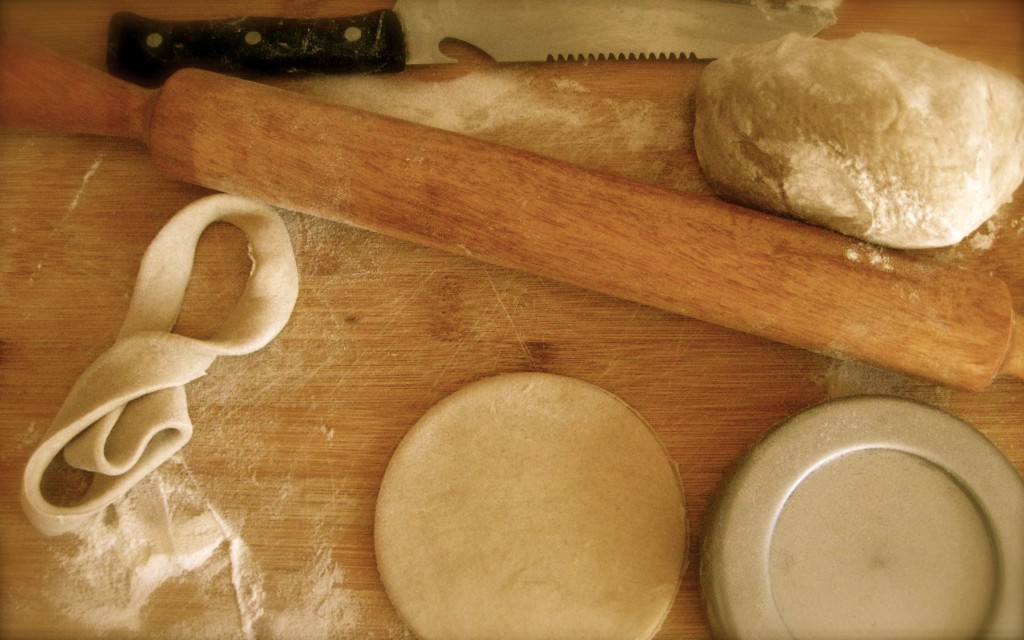
To cut out the rounds, you could use a glass or a sharp-rimmed lid or even a skillfully maneuvered rolling pin. Basically, you want a round, flat bit of dough about 2.5 inches in diameter. I think my tea-jar lid may have been 3 inches. This made biggish pierogies but there’s nothing wrong with that.
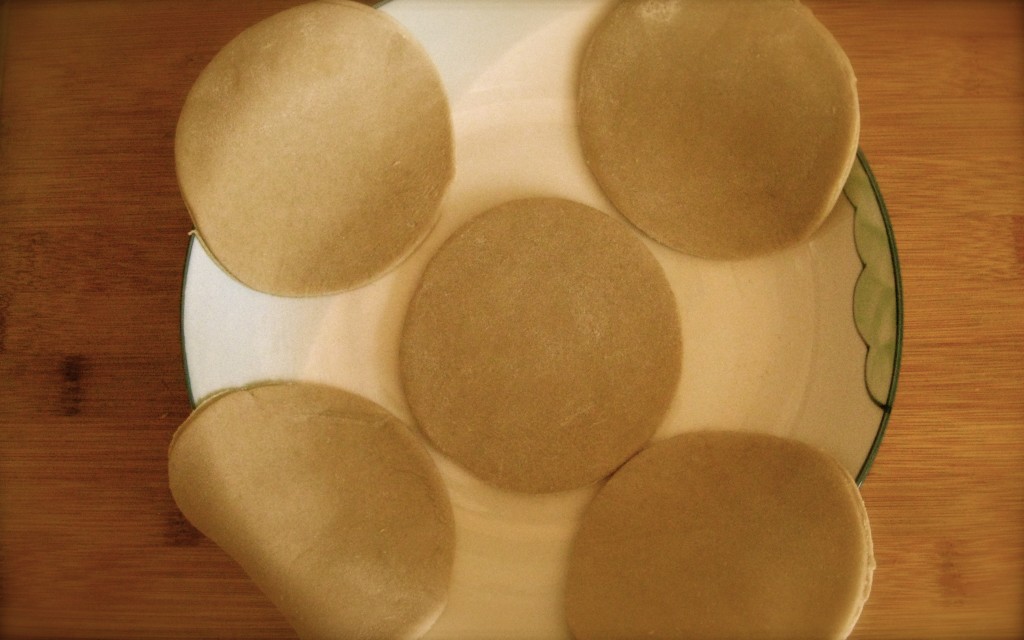
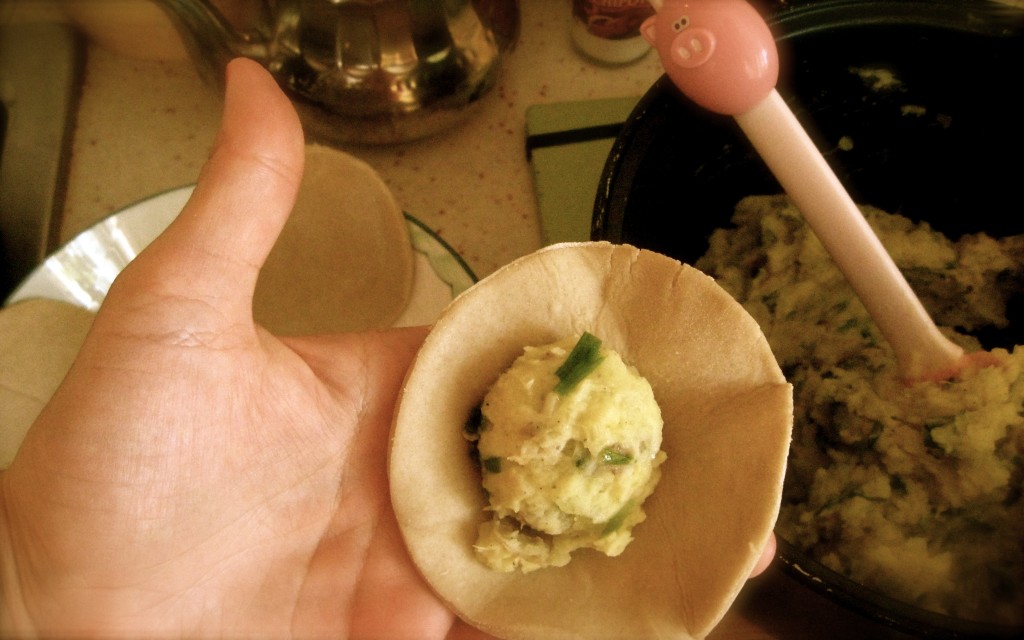
To make the pierogies, spoon a rounded table spoon of potato into the center of the dough then fold the two halves together, pinching the edges closed with your fingers and then with the tines of your fork for good measure. The lady-dough is super stretchy and can put up with a lot of stretching. It’s lovely and forgiving that way.
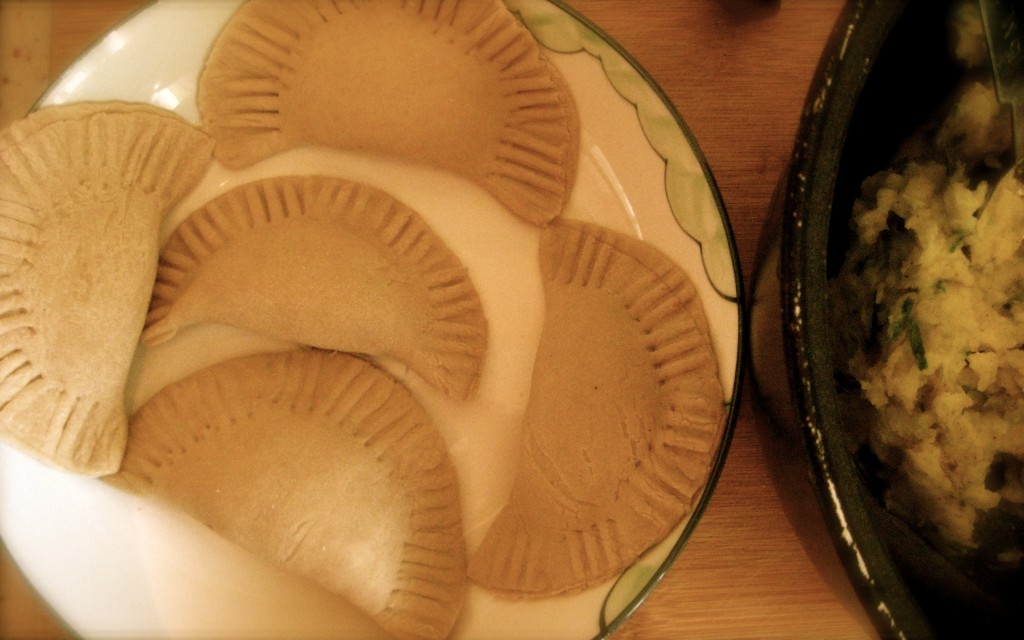
To cook them, there are two steps: boiling and then lightly frying them. In the past, I’ve often stopped at the boiling stage and just eaten them fresh from the water with just a little salt, freshly ground black pepper and a dollop of thick Turkish yogurt. It’s a pretty awesome way to go. However, for further decadence, I recommend the frying bit.
To boil: add the pierogies to boiling water, a few at a time so as not to crowd them, and let them roil away for about five minutes.
To fry: after boiling and draining the pierogies, throw a little oil (like, a tablespoon or so) into the wok and heat it on medium low. Carefully place a few pierogies into the oil and let them fry away, developing their lovely golden crispy shell. Flip, brown, serve.
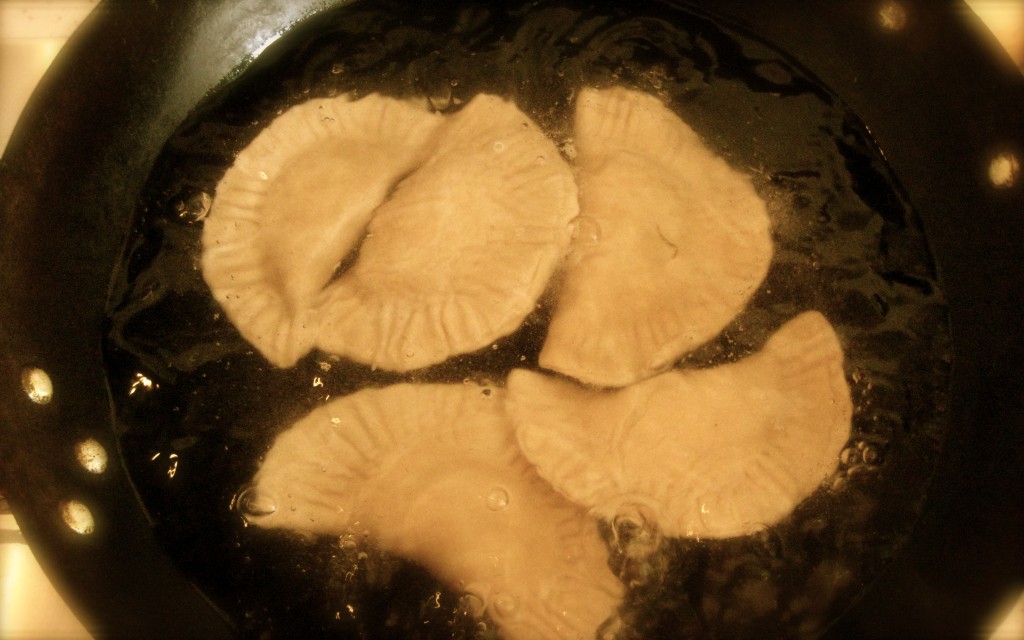
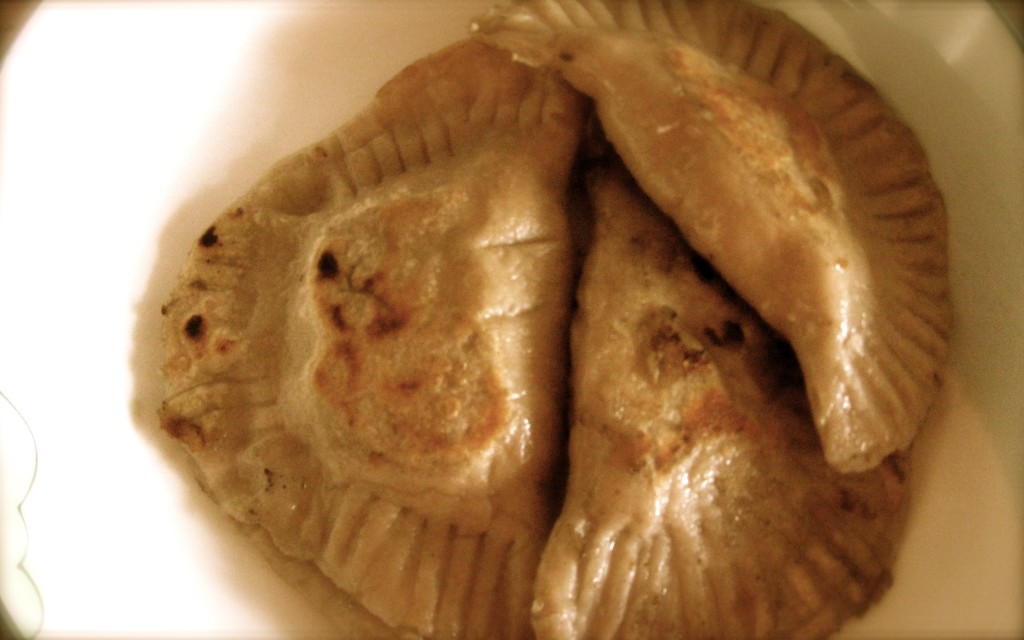
Om nom nom.
You May Also Like
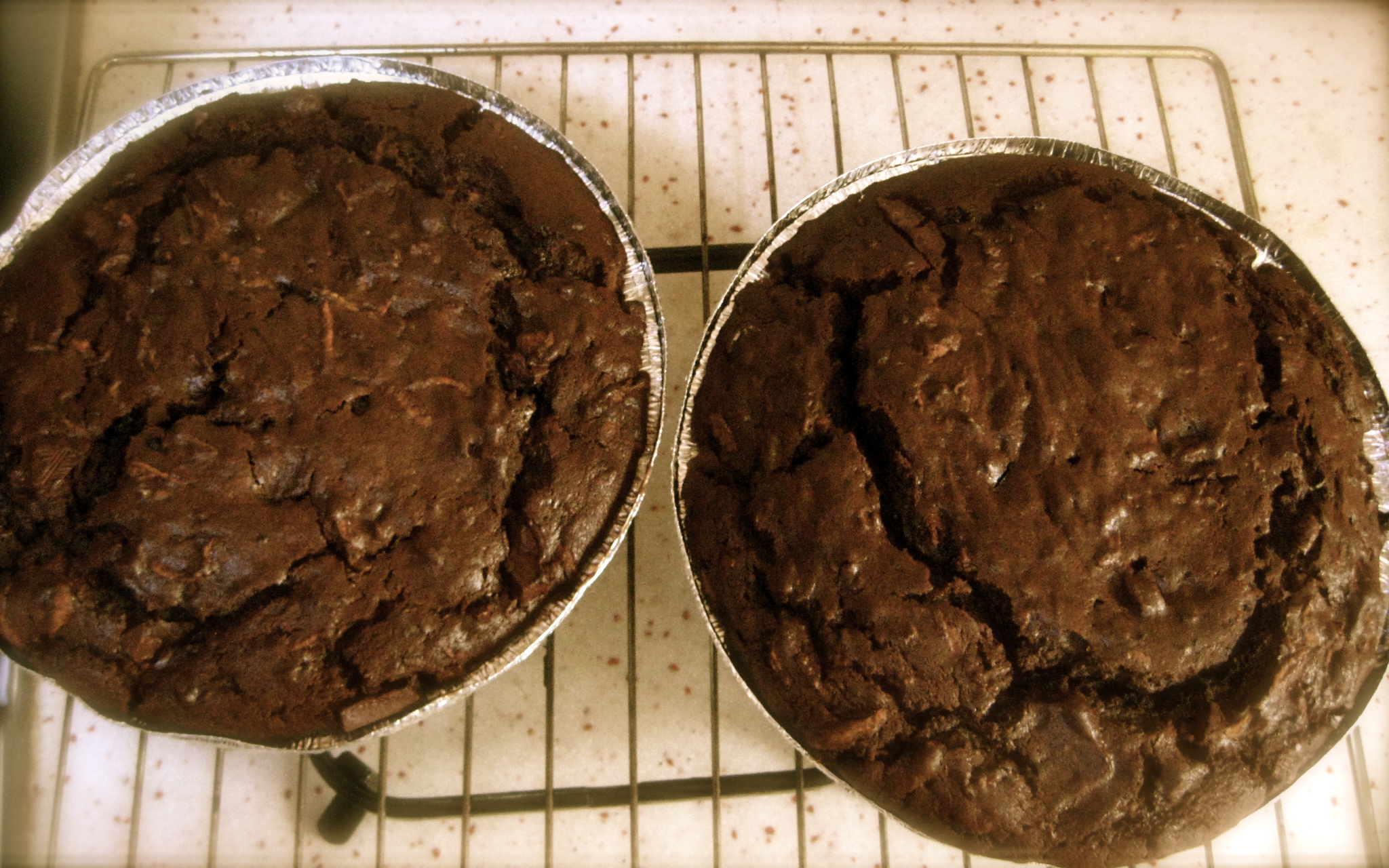
HangZhou Rearranged Chocolate Apple Cake
October 24, 2011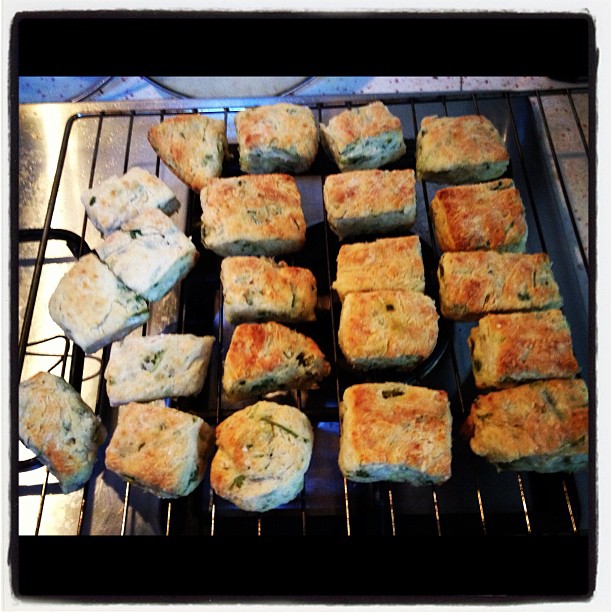
Spicy, buttery rearranged cheese biscuits
November 23, 2012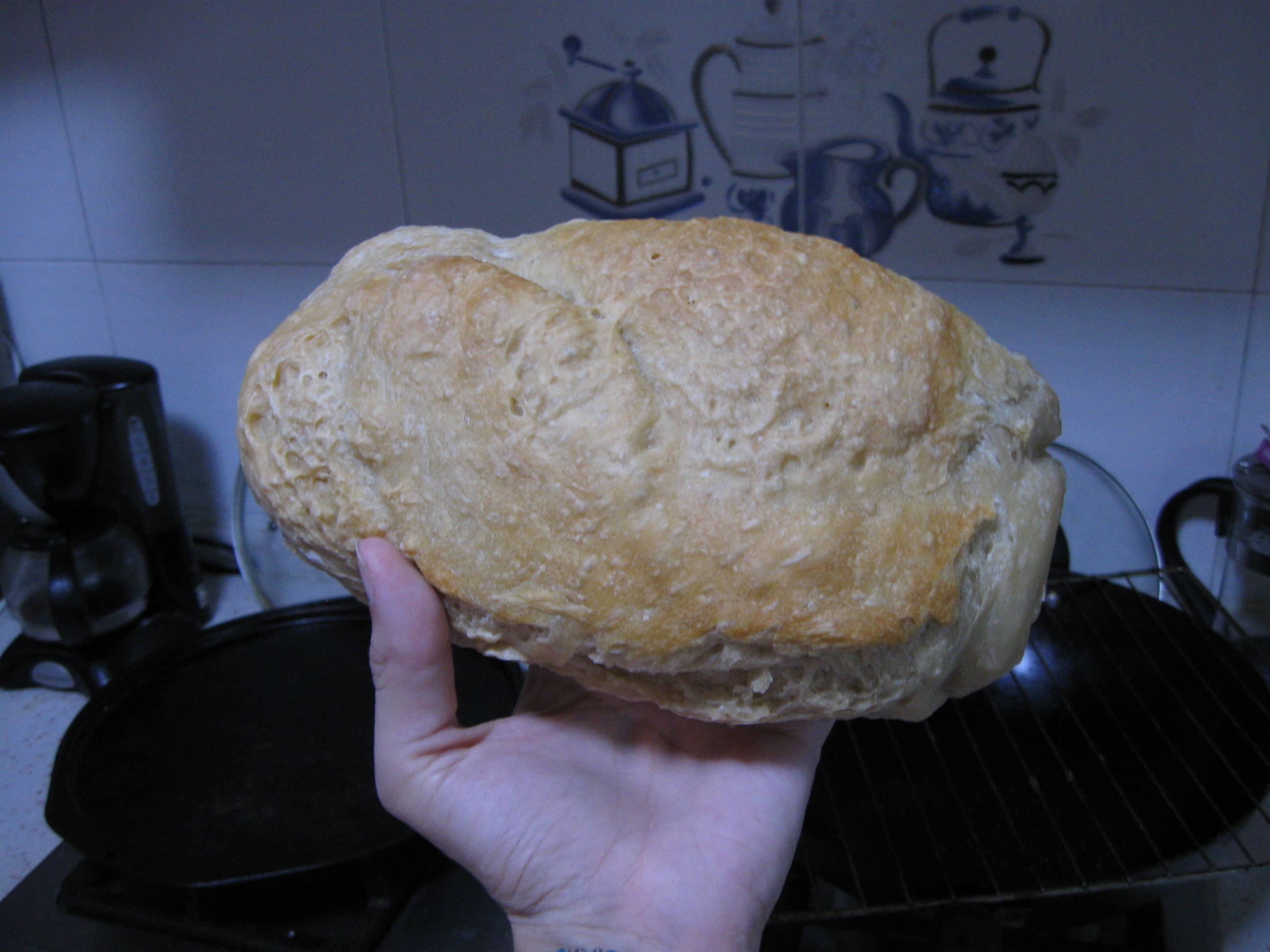
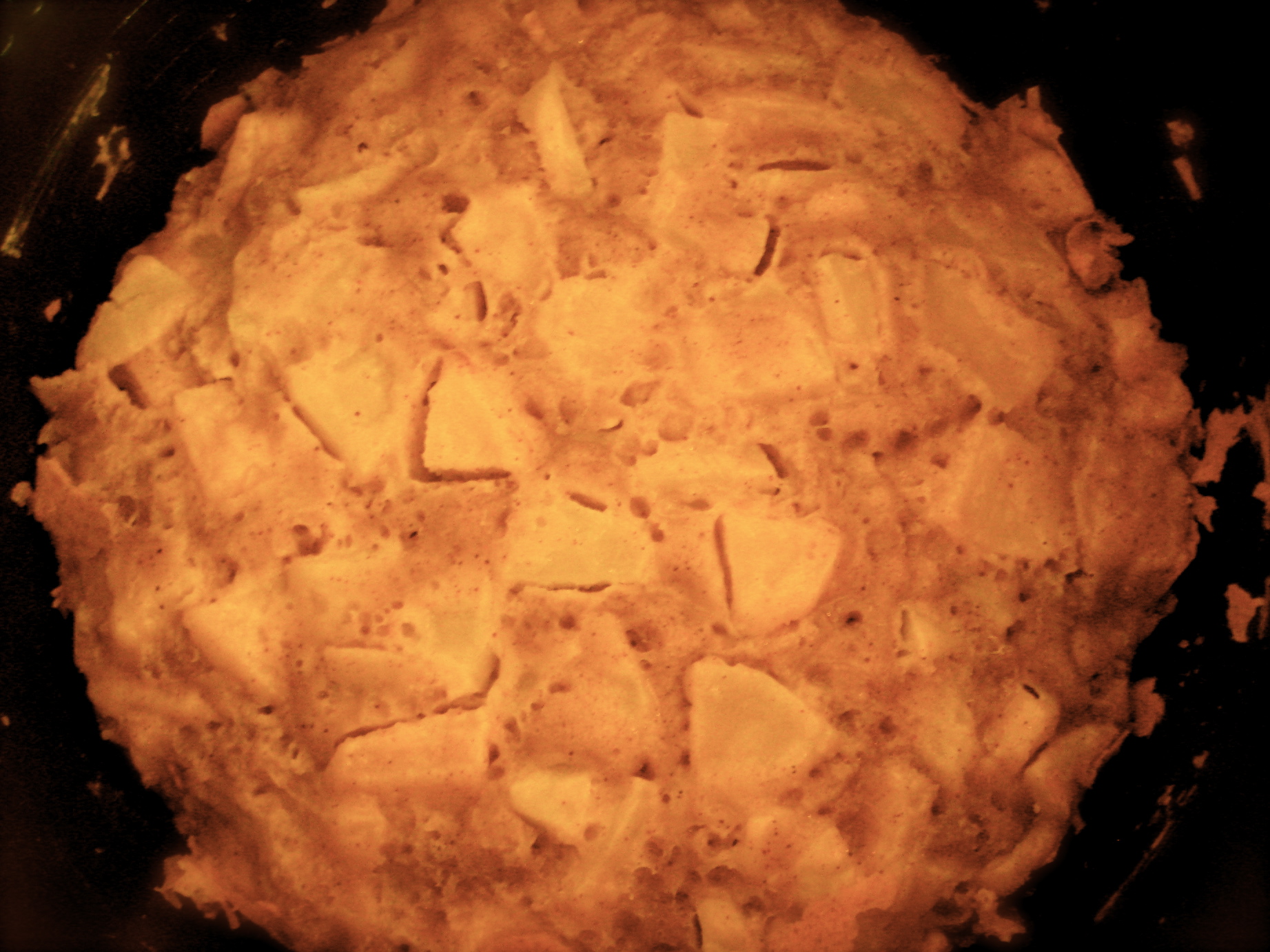
11 Comments
Selly
My mum learned how to make these when she was a little kid in Poland. She made them for me too, not quite using this recipe but her’s were awesome when she made them for me. These sound awesome too!
Tina
Yummy pierogies, never would have made them from scratch if I wasn’t living here. Looks delicious.
MaryAnne
They were delicious! And this recipe made a rather large batch which I was able to freeze and save for later. It’s like a frozen foods aisle in my own fridge… And really, if you do the different parts bit by bit (like, the dough the day before, the spud earlier in the day, assembly before cooking) it’s really easy and not at all overwhelming. Also, with the last bit of dough and spud, I made a round of aloo parathas by spreading a thin layer of spud over a flat round of dough, covering it with another flat round then rolling it out thinner. I cooked it in a little oil in the wok and it was lovely.
I’m kind of glad that China forced me to figure all this out on my own and made me realize how much I could actually do. It’s pretty nifty.
Nicola @ unhip squirrel
Oh man… pierogies are also the food of my people! Homemade are out of this world compared to the stuff you buy in the freezer aisle. Ridiculous. Thanks for sharing. Now if only you could get Mennonite sausage in China, I’d have something to show you!
Nicola @ unhip squirrel recently posted..sour cream blueberry scones
MaryAnne
Pierogies are awesome. I’m so glad I decided to make them as they are pretty much one of the great comfort foods of my childhood. I though you had to have cheese or cottage cheese or sauerkraut to make them but no- you don’t! I’m going to make them more regularly now. And would you believe I’ve been researching how to make sausage here? Problem is, I have no idea where to get sausage casings, and even if I found them, can you stuff the casings by hand? Seems awkward. Chinese sausage is totally wrong for these- it’s a fatty, sweet chorizo.
Nicola @ unhip squirrel
Ahaha! Yes. My grandmother made them with cottage cheese. I actually prefer them that way, though I do love the cheese and potato way also. 🙂 Totally intrigued by the sausage-making. I can’t wait to read about it!
Nicola @ unhip squirrel recently posted..silk dragon jasmine tea shortbread
MaryAnne
I always loved the cottage cheese kind best too, though I have a feeling my mind would be blown by the home made version…
Still researching sausages. May have to resort to sausage patties at this rate, given my inability to find casings.
Marie
600g potatoes and pierogies? You are calling my little Polish heart. When are you making sauerkraut? Your neighbours will love you.
Marie recently posted..In Defence of Food: Book review
MaryAnne
It’s actually on my list of things I’m considering making…
Marie
Really? I’ve been wanting to do it too. Shall we do it at the same time? Inter-blog, inter-country sauerkraut-making posts are all the rage, I hear.
Marie recently posted..In Defence of Food: Book review
MaryAnne
My cousin back home has been making it for a few years now ever since her little girl developed an intriguing taste for pickles and sauerkraut when she started eating solid foods as a baby (seriously). I should ask her. Last time I went home they had a bunch of jars of sauerkraut going in the kitchen.